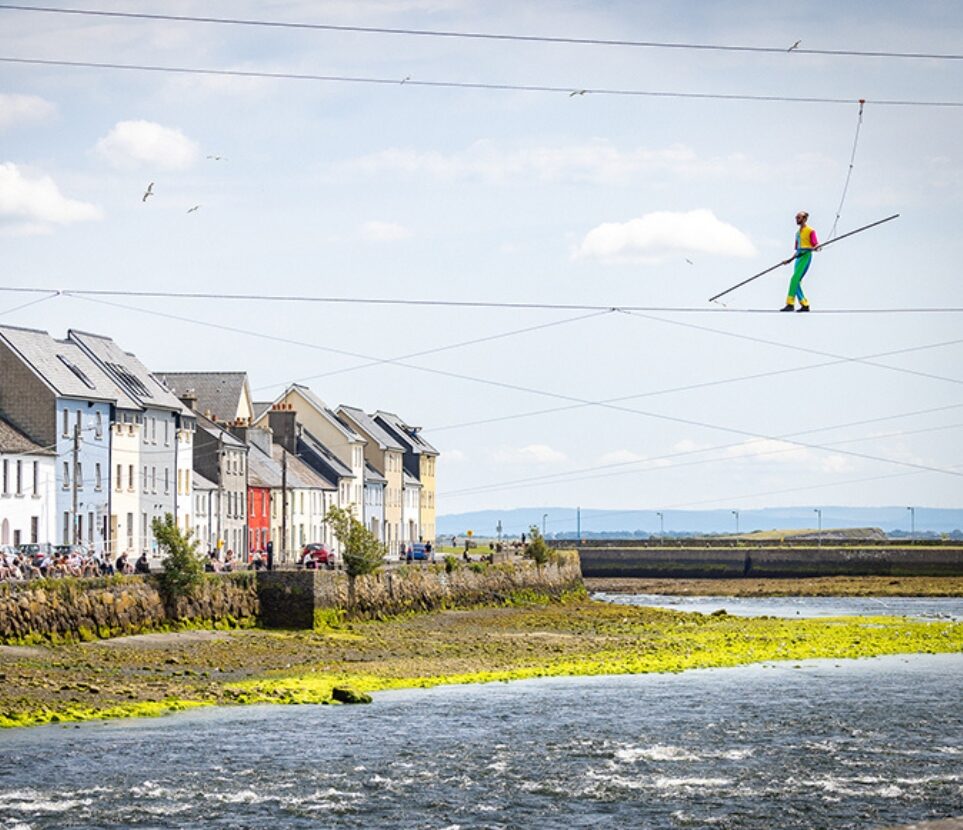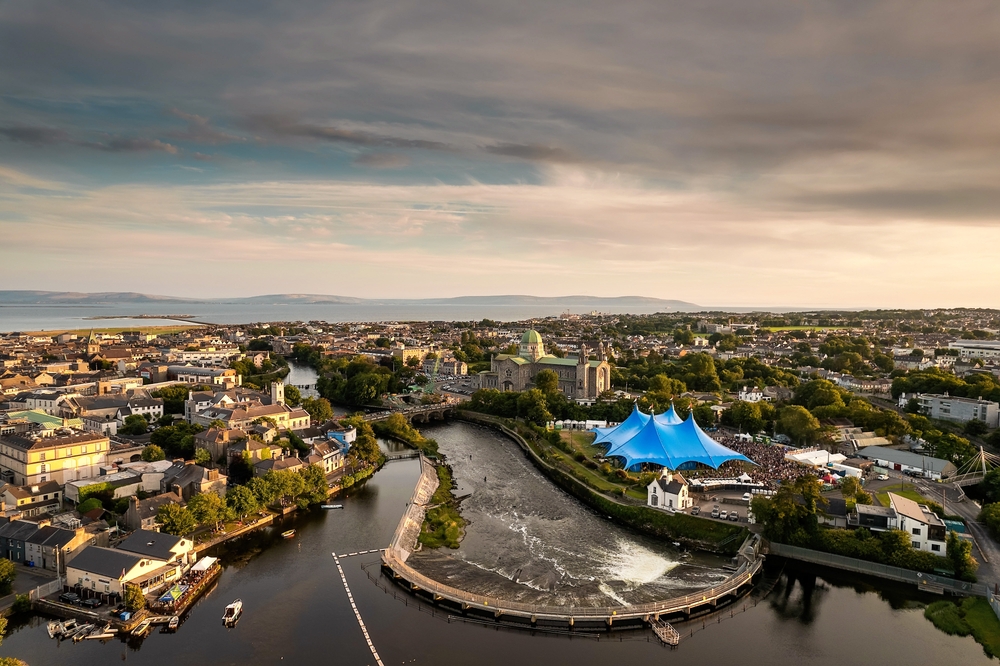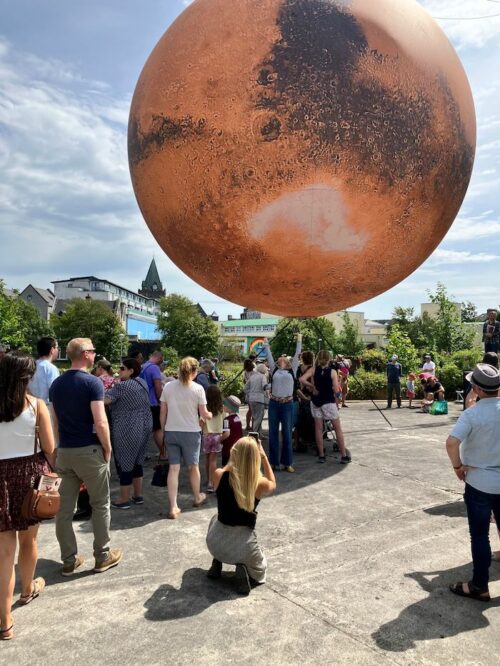
Feature image:
Artist: Galway Community Circus.
Performance/event: LifeLine.
Photographer: Emilija Jefremova.
Over the course of the past two decades, the world has become increasingly captivated with all things creative. The coincidence of a number of policy initiatives, academic and popular texts alongside the rise of number of commercial ventures have focused the mind on the creative aspect of the economy. I must confess, I too have also been lured in. Much of my work over the past decade has attempted to make the case for supporting the creative sector in Galway and the west of Ireland (and beyond).
For some, the rise of creativity has marked the end of the old ways of doing things. The industrial economy had come and gone and the developed world has concerned itself with making experiences while the making of ‘things’ could be left to the developing world. This heralds a different type of economy, one that can also shape places in newer, sexier ways. Gone would be the skylines of smokestacks and in their place would be the art galleries, the concert halls and the museums, peopled by young people with interesting facial hair and a capacity to remain eternally hip.
Statistics backed this up. In something of a self-reinforcing trajectory, creative economies made creative cities, and creative cities were competitive cities. All this translated very quickly into policy making and real-world action. Yes, fund a new art gallery; that will always be more enticing than fixing the leaking water system. For me, the geography of all of this was most interesting. The new creative economy was considered a global one. Successful cases were not the preserve of spatial planning conferences, but were beamed across the world through new media devices that saw us all want to have sex in that city, meet friends for coffee in Central Perk and wear that Vuitton piece in Paris while also expressing our true selves.

What all of this media forgot was that culture and creativity can’t be lifted and replanted with the same effect. We were sold the lie that you too can be creative, when the reality is, was and will be, that culture and creativity are innately spatial entities, bounded to the geography from which they came. Making a creative place without culture would prove to be folly.
Galway and culture, and culture and Galway. Ireland’s creative city? Kind of; the statistics will tell us that there is a relatively buoyant number of ‘creatives’ working in the city. Looking at it another way – from the perspective of international designations, the city is awash with culture and creativity. UNESCO city of film, purple flags, and of course the ill-fated ECOC (European Capital of Culture) all for Galway must surely mean it is a place where culture and creativity is thriving?

While (again, hands up, I was involved in some of those bids) designations ask a city for their future plans to ensure sustainable creative sector, the reality is cities are chosen on the basis of a proven capacity to deliver. Galway has had many makers of different types of culture call this place home. That should always be celebrated. The question that I am more interested in is: does Galway have the capacity to support young creatives to make new types of culture in this place into the future? The answer to that is, less certain.
Part of this is beyond the remit of the city, international hedge funds speculate, rents rise. Galway is expensive. That is a major factor. Beyond that tough nut though are the things that Galway can do for itself to make it more welcoming to a new wave of creative and culture makers. It can be more forgiving – it can be a place that nurtures experimentation, that acts as an incubator of talent, that permits awkward questions and encourages actions against the status quo. It can do more to make access to its resources easier it can work harder to eradicate the perceptions of barriers to entry. Galway can and must ensure that creativity is not sectioned off, a nice adage, or something that we turn our attention to for a couple of weeks in the summer, but make it part of every aspect of all that we do.
Galway made its name on the basis of the fertile culture innate to the place. Young makers came to the city, lived in it and made culture for it. Galway needs to ensure it can continue to be a place to do that. It needs space, it needs opportunities. It needs to provide places for the accidental coincidence of young people with different ideas of culture – with different ideas of what it is to celebrate, to meet, to argue, to fall in love with each other, to fall in love with each other’s cultures and the culture of this unique place. Hoping that it will happen will not cut it when young people have to pay exorbitant monies to live in the place; ensuring it can happen is what is needed now. Doing this is less about the provision of clean, glass and steel visages dreamt up by international architects and more about the opening up of unsuspecting (unused) spaces as sites of collision, experimentation and questioning, thereby enabling the future growth of Galway as a truly creative city.
Pat’s forthcoming book Galway: Making a Capital of Culture is published by Orpen Press.
Learn more about Pat’s current project, IN SITU here. Place-based innovation for cultural and creative industries.
Profiles
